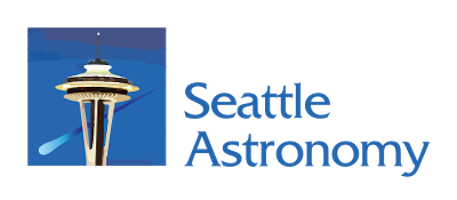Wagner, business development manager at Kent-based Blue Origin, said the company’s goal is to get more people into space, and that they have to do two main things to accomplish it.
“We have to change the risk profile, we have to make this less risky; and we have to change the cost, make it less expensive,” Wagner said. She added that a key to cost containment will be to develop reusable rockets.
 |
| Garrett Reisman of SpaceX spoke about the company’s work at the SpaceUp Seattle conference Saturday at the Museum of Flight. Photo: Greg Scheiderer. |
“Affordable reusability is the key to having a real breakthrough in spaceflight,” he said.
Reisman feels it’s a great time to be an aerospace engineer.
“We’re at the cusp of what I think is going to be a golden age of spaceflight,” he said, comparing the era to the time of rapid advancement in general aviation that occurred around World War II. “Right now, we don’t know what a spaceship is supposed to look like, and that’s awesome!”
The two said their companies aren’t really in competition with each other. In fact, Wagner called it “coopertition” as they work together on regulatory and education issues. “We’re trying to build an industry right now,” she noted. “The market will sort it out.”
Reisman added that competition is good for the companies.
“It’s also really good for NASA. It gives them leverage and it makes us try to outperform each other. The end result is a much better product,” he said.
In addition, they’re pursuing different niches within the industry. Blue Origin is focused on suborbital spaceflight, while SpaceX is pursuing near-Earth orbit, geosynchronous Earth orbit, and beyond. The latter is partly because of the aspirations of SpaceX founder Elon Musk.
“My boss wants to retire on Mars,” Reisman quipped, “so the clock is ticking.”
Blue Origin, meanwhile, sees lots of customers for its suborbital work.
“We’ll be looking up and looking down,” Wagner said. “We believe there’s a real market for space science and Earth science payloads aboard these spacecraft.” She said NASA could never go into space frequently enough or inexpensively enough to make it happen, but if companies can drive the cost down, it will open things up for space tourists as well as university and corporate researchers—even small, local, science-fair projects might be able to scrape up the cash to be launched into space.
“Let’s put space in the hands of the people,” Wagner said.
Reisman agreed the doors to space will fly open once they get the cost of launching stuff down into the range of hundreds of dollars per pound.
“All the promises of science fiction—that suddenly becomes really doable when you get down to that level,” he said.
Speaking of science fiction, Lewicki, president of Planetary Resources, gave a talk that wasn’t about his asteroid mining company. Instead, he gave a presentation from the Keck Institute for Space Studies about a plan for lassoing an asteroid and bringing it close to Earth for further study. The notion drew some interest because NASA recently requested funding for preliminary work on the project.
Lewicki said it isn’t such a far-fetched notion to fly out to a small asteroid, capture it, and then park it in a Lagrange point for safe keeping and easy study. There are a lot of hurdles to overcome, not the least of which is finding a suitable asteroid for the purpose.
There’s a wealth of information about the asteroid return mission on its project page.
